What started out as a routine training paddle for Tim Dwyer, myself, and novice surfski paddler Tim Hudyncia(Tim H) got interesting due to a combination of benign circumstances. These circumstances surrounding our paddle could have easily happened to most of us. Tim H, the good sport that he is, said I could post this for others to learn from.
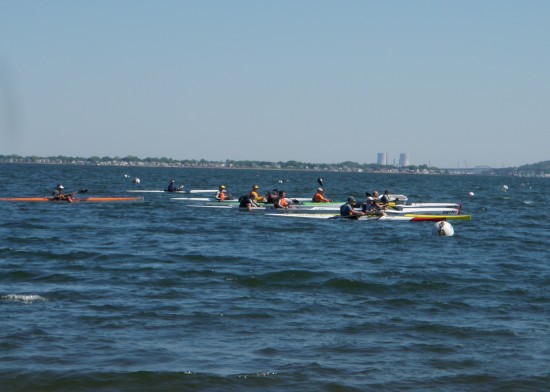
Sakonnet River with Island Park in background on summer day. 2 miles towards towers in background was were Tim H capsized.
Paddling on the Sakonnet River(10 miles long, 2.5 miles wide with small bay like conditions) is routine for Tim and I since it is one of our primary training sites. This day was no different with the exception of having a relatively novice surf ski paddler Tim H paddling with us. Tim H has been paddling a ski for a few months now. I had paddle with Tim H on a few occasions including a double ski in flat conditions. Tim H, an excellent athlete in his 40’s, was running late while Tim and I were already on the water waiting for him. Once Tim H got on the water, Tim and I were chomping at the bit to get going. So after a few short minutes of paddling together and watching Tim H trying to get stable in his ski, Tim and I set off on a 5 mile time trial. Our message for Tim H was to stay close to the shore like we are going to do since the water temps are in the mid 30’s, the wind was blowing Southwest 8-12 mph and the air temp is 28 degrees feeling like 20.
Tim and I paddled downwind, close to shore toward Island Park and then parallel to Island Park Beach for 5 miles before we turned heading back to McCorrie Point. After a few miles, I could barely see Tim H about a mile ahead of us, in the middle of the Sakonnet River while Tim and I were only 20 yards from shore in the lee. We paddled a few minutes more looking for Tim H when I saw him out of his ski. I waited for Tim to get closer to me and I pointed to Tim H. Tim yelled,”I will call 911″. I yelled, “let me see how he is doing first”. At this point I was about a half mile from Tim H and headed for him. Tim headed toward shore to call 911. Tim watched us closely, and was assuming like I was, that Tim H had to be getting hypothermia despite having a drysuit,pogies, and hat. I know my hands would have been useless after about 5 minutes and Tim was thinking the same thing.
When I got to Tim H, he was in the water with his ski headed downwind. Tim H remounted in seconds and took a few strokes before he capsized again. He remounted again in seconds. I told him to paddle with his feet out and head toward the shore about a half mile away. I asked him if he was okay? Was he cold? He responded that he was not too cold but just could not keep his ski upright.
So after about 10 minutes of paddling with his legs out, we landed at another launch site and reevaluated Tim H. In the meantime, Tim had seen Tim H was able to paddle and decided not to call 911 and met us on the water. Tim H was cold, but said he could paddle the two miles back to McCorrie Point. Tim and I concluded he could if one of us stayed with him. I had planned to call Betsy(wife) and have her come get us but we decided this was not necessary. So off we went Tim H and myself, paddling together while Tim went ahead to warm up the cars. We landed about 30 minutes later with Tim H, cold but in surprisingly good shape. We were lucky because of Tim H’s high tolerance for cold, determination, and high overall fitness. Fortunately, I spotted Tim H when I did and offered some verbal assistance by telling him to paddle with his feet out which enabled him to stay in his boat while slowly turning it upwind and making it to shore. I was ready to help him remount but this was not the case, since Tim H is an excellent re-mounter.
Lessons Learned
1. Having paddled with Tim H a few times before, I over estimated his paddling skills. He was concentrating very hard in the few minutes we paddled together before Tim and I started our time trial. While I told him to stay close to shore, he later said he wanted to avoid any rocks so he stayed out. We all know how hard it is to concentrate in staying upright while keeping abreast of where you are. In just a few short minutes, you can be easily blown away from the shore. This all could have been avoided if I would have taken the time to tell Tim H exactly what our plan was while on land. Tim and I were already on the water once Tim H joined us. He was concentrating too hard to hear all of what Tim and I were saying. So poor communication on our part. I should have met Tim H on the beach and explained what the plan was, pointed out the potential obstacles, wind direction and the importance of staying close to shore.
2. Tim and I should have done our routine “circle backs” after about a mile to make sure Tim H was doing okay. I assumed Tim H would be fine if he stayed close to shore like Tim and I were doing. Tim and I were anxious to get moving and focused on our time trial. We normally take our time with less experienced paddlers but today we varied our routine thinking Tim H would be fine.
3. As is most often the case in paddling, judgement is called into play. As an experienced paddler and instructor, I should have slowed things down and treated Tim H like any other novice paddler until I was sure he was fine and then continue to do circle backs to re-access or make the decision that today was beyond Tim H’s skill level.
4. What we all did correctly was that we had all our safety gear: drysuits, leashes, telephones, VHF, pogies, etc.
5. Both Tim and I are very experienced paddlers and knew what to do in this situation once we saw Tim H was in trouble. I went to aid Tim H and Tim went to get help by calling 911 if necessary. I also had my waterproof phone on my person so I could have called 911 also or used my VHF or as last resort my Emergency Beacon.
So in summary, the biggest decision we can make as paddlers is whether to launch or not, and knowing the conditions and skill level of the paddlers. Having the proper cold water gear is critical in winter paddling because the margin of error is slim in winter surfski paddling. Lastly, as I told Tim H later at my house, that ultimately, no matter who you are paddling with, you need to prepare like you are paddling alone. As is often the case in surfski paddling, you can get separated very quickly from the group either purposely or unintentionally. The less skilled you are, the quicker this can happen.
This was a great reminder for me to reaccess my judgement, my gear, and my safety checklist, in hopes to avoid similar situations that could have had a different outcome.
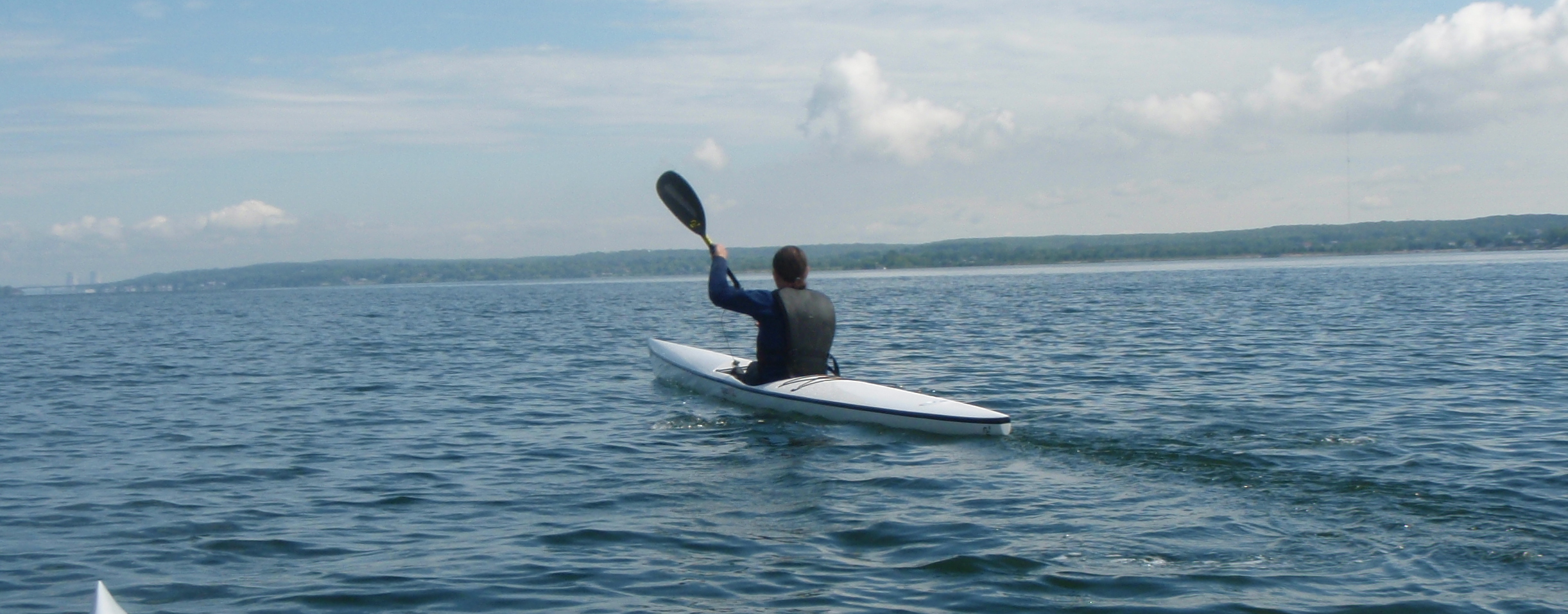
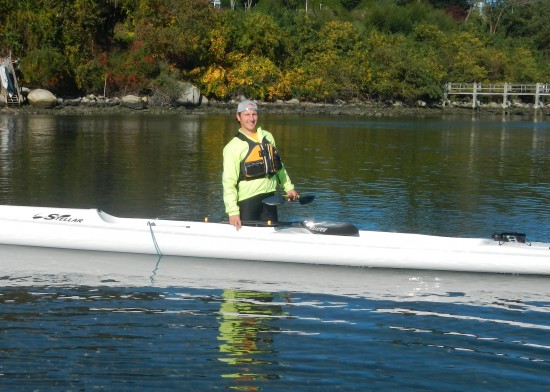
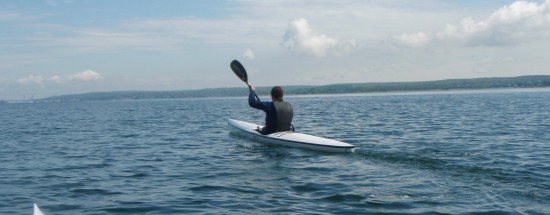
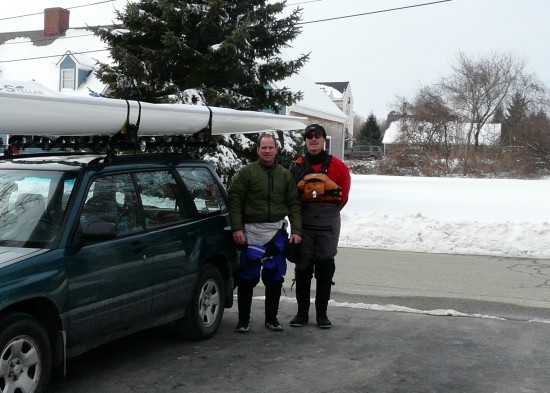
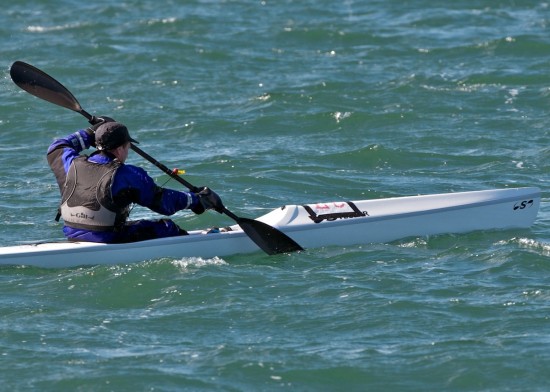
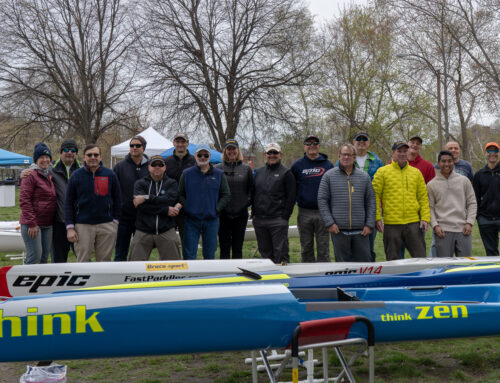
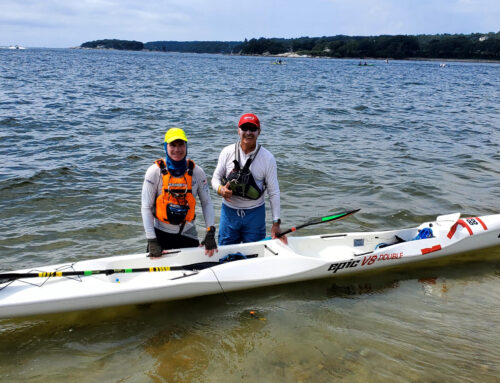
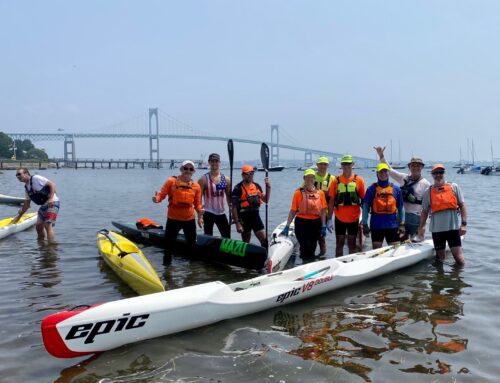
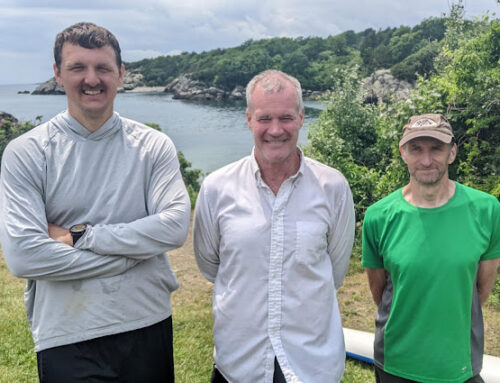
Leave A Comment
You must be logged in to post a comment.